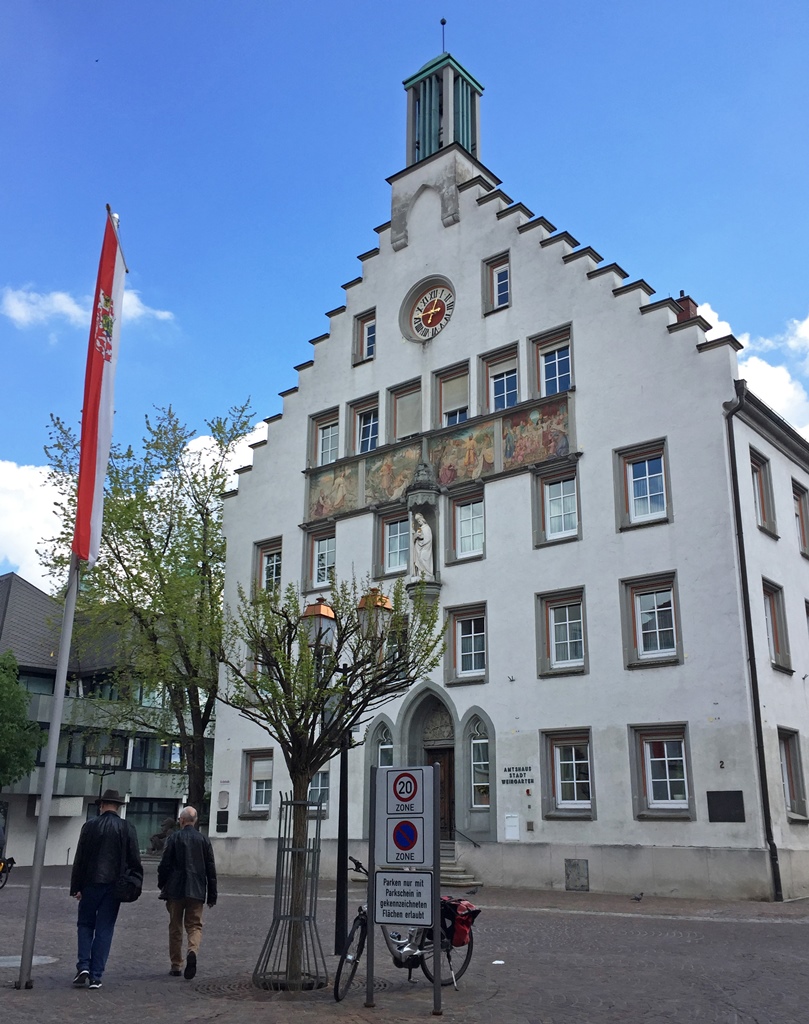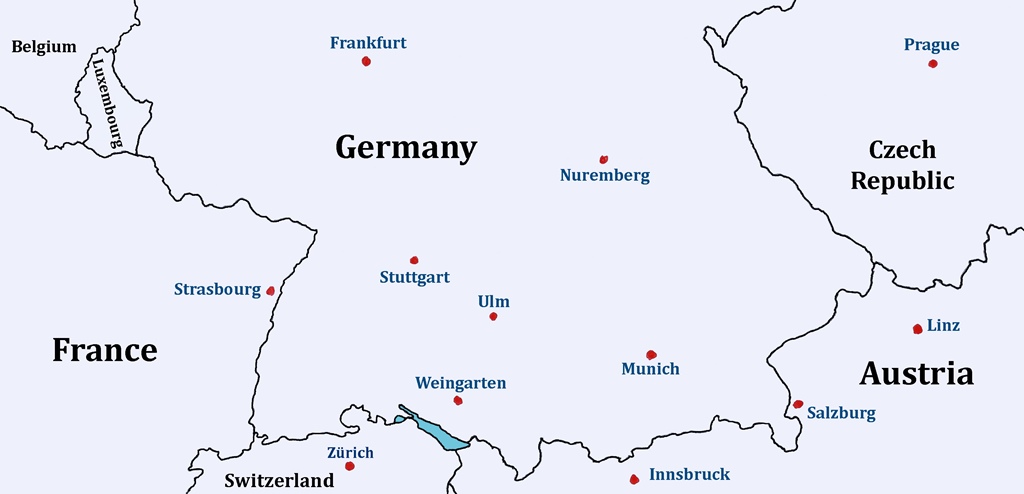
Southern Germany
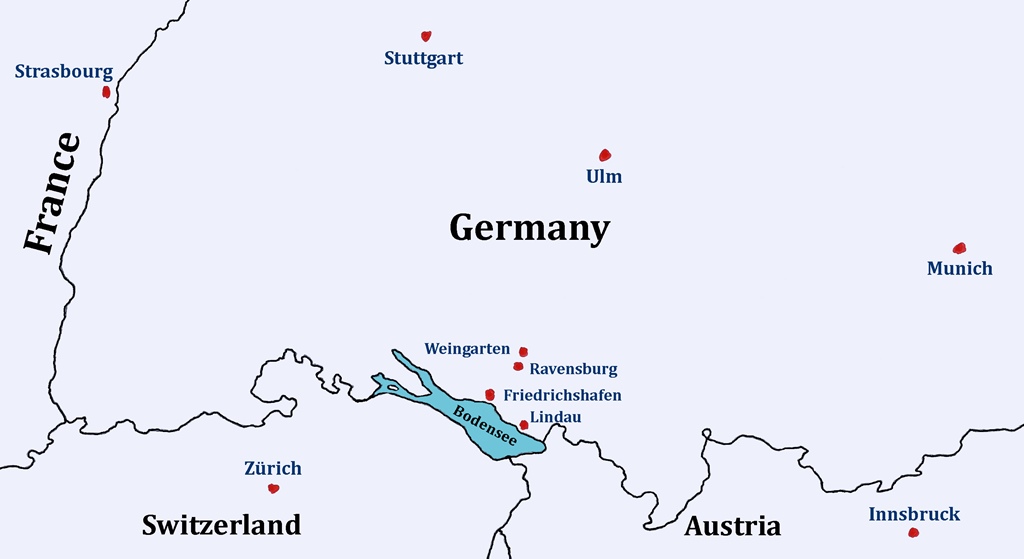
Southwestern Germany
Weingarten is a town of about 24,000 inhabitants, located in the state of Baden-Württemberg,
which occupies the southwestern corner of Germany. The town is about 15 miles north of the
Bodensee, the third-largest lake in Europe (known in English as Lake Constance), through
which borders of Germany, Switzerland and Austria run. Until 1865, Weingarten was called
Altdorf (literally “old village”, but historically derived from a Frankish expression meaning
“village with parish church”). The “Weingarten” name came from the Weingarten Abbey, a
Benedictine monastery which has occupied a hill above the town since 1056. “Weingarten”, as
you may have deduced, translates as “wine garden”, or vineyard, and was undoubtedly thought to
be a more inviting name than “Altdorf”.
Over the centuries, ownership of the Altdorf/Weingarten area changed from the Frankish Welf
dynasty (9th Century through 1191) to the Hohenstaufen dynasty (1191-1268), to the Holy Roman
Empire (1268-1805) to the dukedom of Württemberg. A military presence was established in the
19th Century, and the young Erwin Rommel spent time here prior to the First World War. After
distinguishing himself in the war, Rommel returned to the area and was credited with
peacefully quelling Communist uprisings in the nearby towns of Friedrichshafen and Lindau.
Then he went on to do some other stuff.
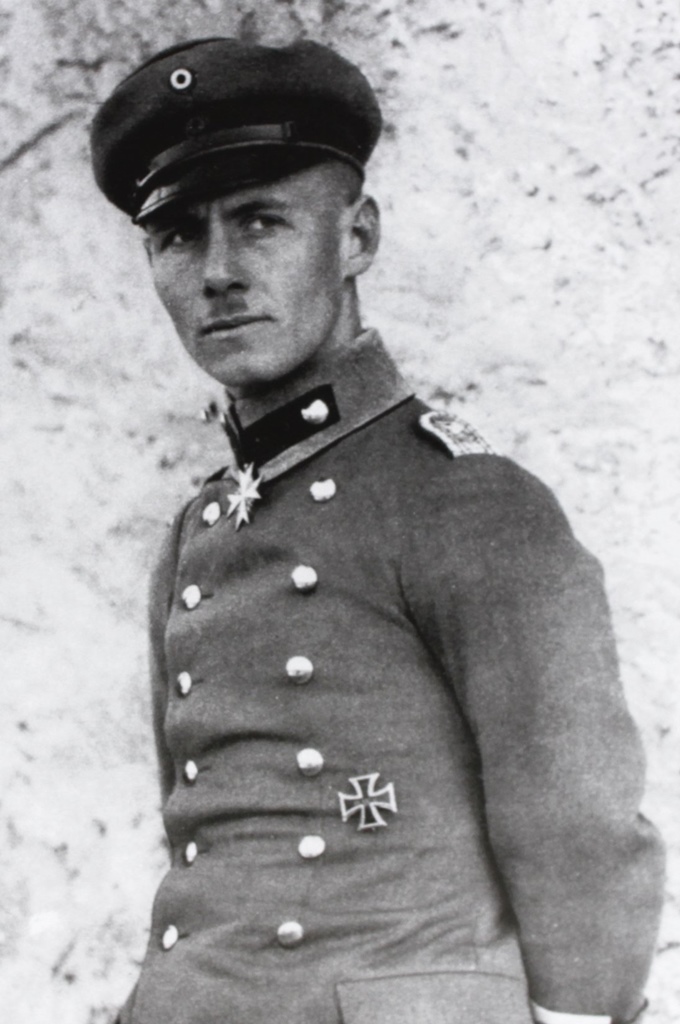
Erwin Rommel, During World War I
During the time of National Socialism (the Nazis), Weingarten was merged into the neighboring
city of Ravensburg (1939), and then re-separated after World War II, in 1946 (a 1970’s attempt
at re-merging the cities was unsuccessful when Weingartners objected). Weingarten became part
of the new state of Württemberg-Hohenzollern in 1947, which was incorporated into
Baden-Württemberg in 1952. Industrialization of the town began in 1866 with the building of a
spinning mill, and today the city is home to a number of medium-sized companies that provide
high-tech and other services. There are two universities in the city.
So why does a 21st Century tourist visit Weingarten? There might be different answers to this
for different people. The surrounding area, known as Upper Swabia (or Oberschwaben) has
many points of natural, cultural and historical interest. There is in fact a tourist theme
route through the area, called the Upper Swabian Baroque Route (Oberschwäbische
Barockstraße), and Weingarten is a prominent stop on this route, with points of interest
I’ll address below and in future pages.
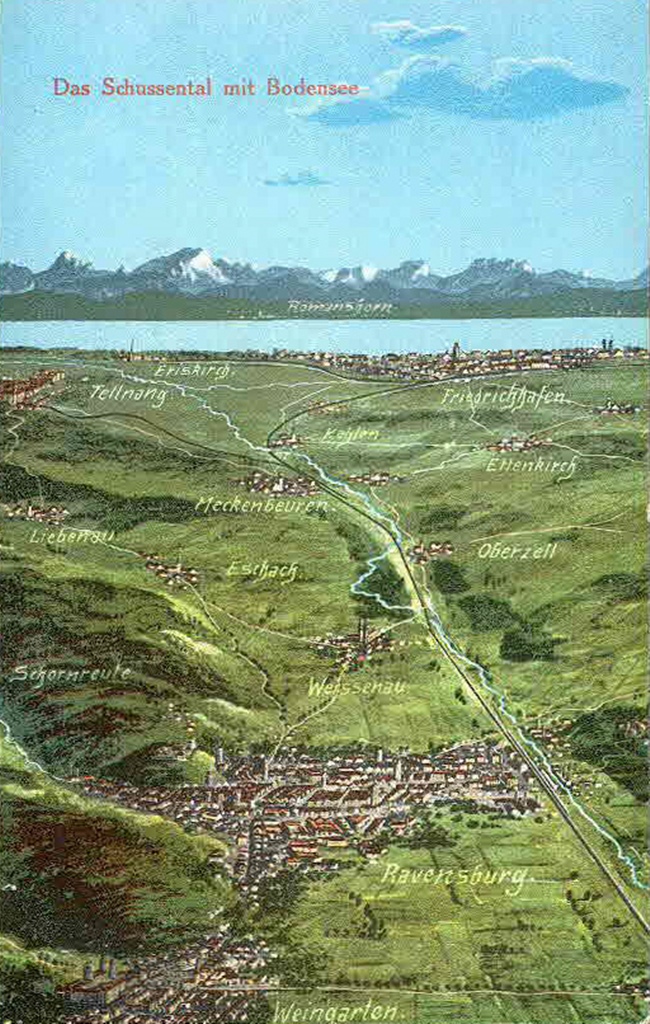
Weingarten Area, Looking South
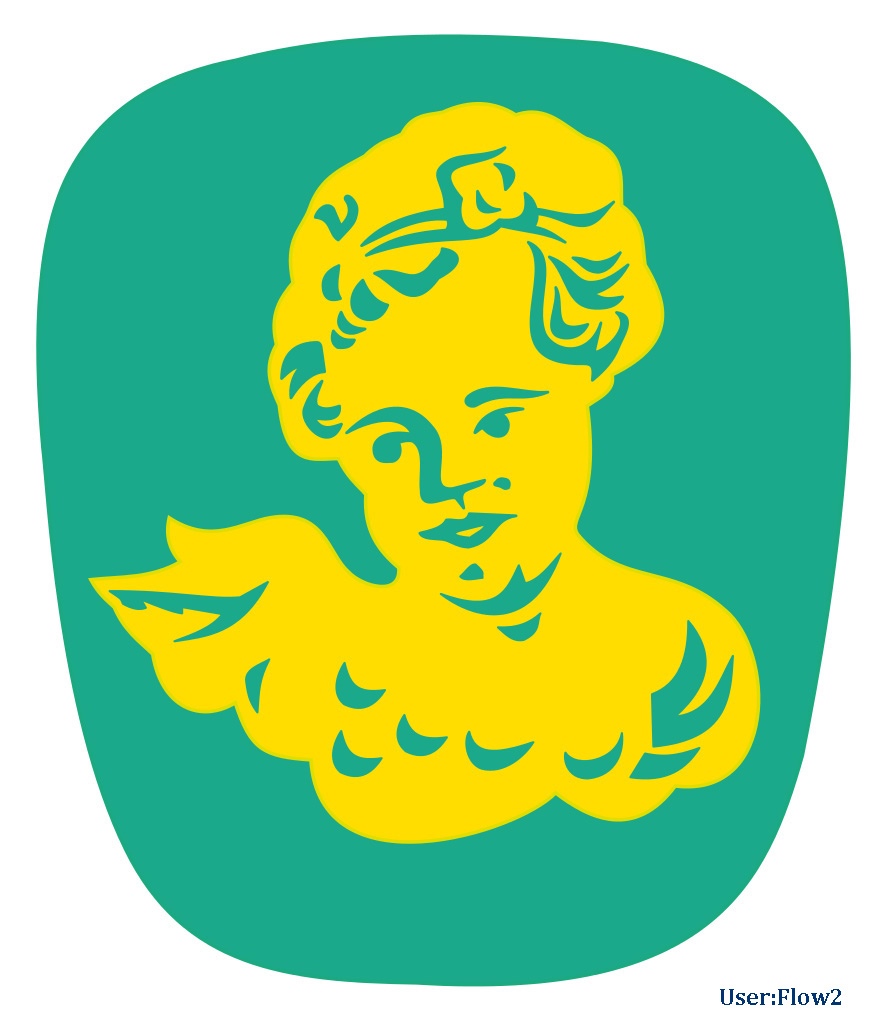
Logo, Upper Swabian Baroque Route
But our main reason for visiting, which might not apply to you, is because we were invited.
We have relatives who live in Weingarten, and their eldest son was getting married. The
consequences of this invitation should serve as a warning to you: if you invite us for a
visit, and you even include a party, there’s a real chance that we might show up on your
doorstep, with a pile of luggage, asking what’s for dinner.
In this instance, “we” included our daughter Connie, who was able to clear her busy schedule
long enough to accompany us on this trip. And we didn’t plan on quite landing on our hosts’
doorstep, though we ended up coming a lot closer than we’d expected. The trip started out
innocuously enough. As usual, we arranged transport (via our son Philip) to Los Angeles
International Airport, where we went through the usual procedures, eventually boarding a
United Airlines flight to Chicago O’Hare airport (we’d been unable to find a suitable nonstop
to Germany). We’d somehow never passed through O’Hare before, and exploration of the airport
yielded some minor surprises for us.
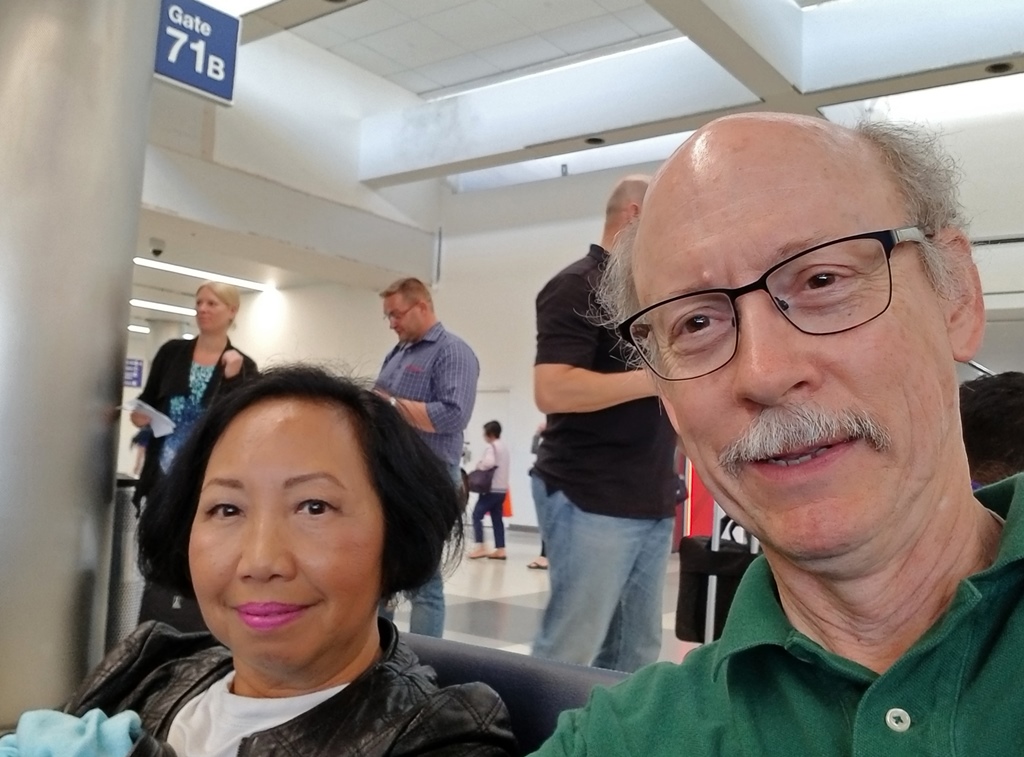
Nella and Bob at LAX
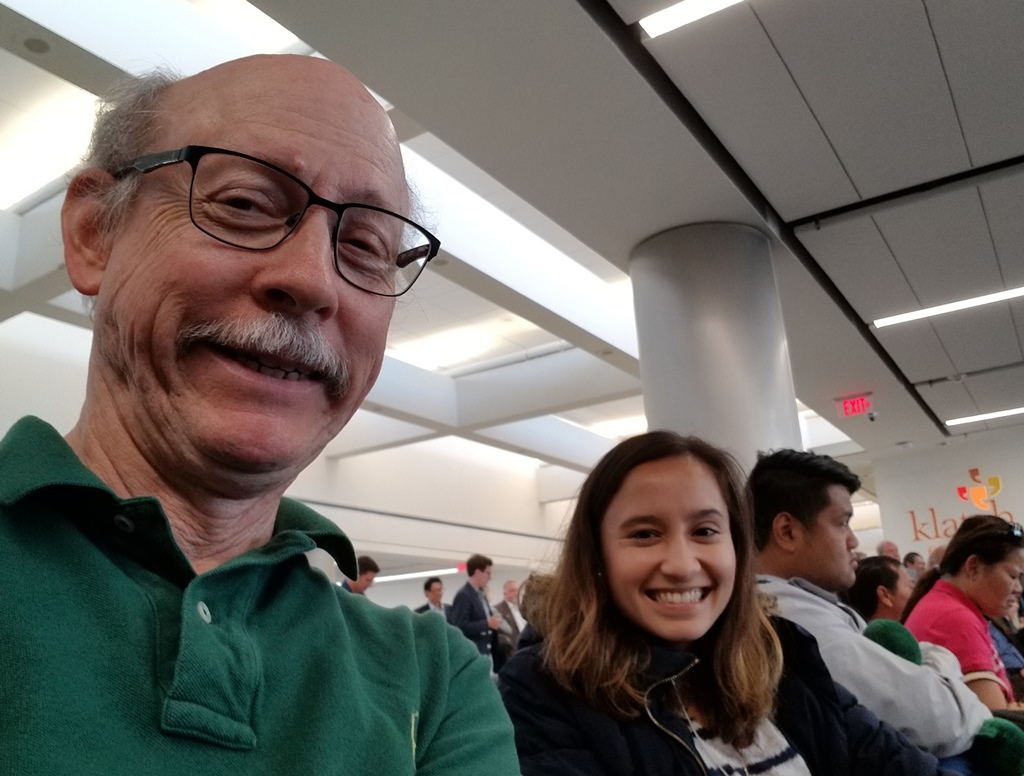
Bob and Connie, LAX
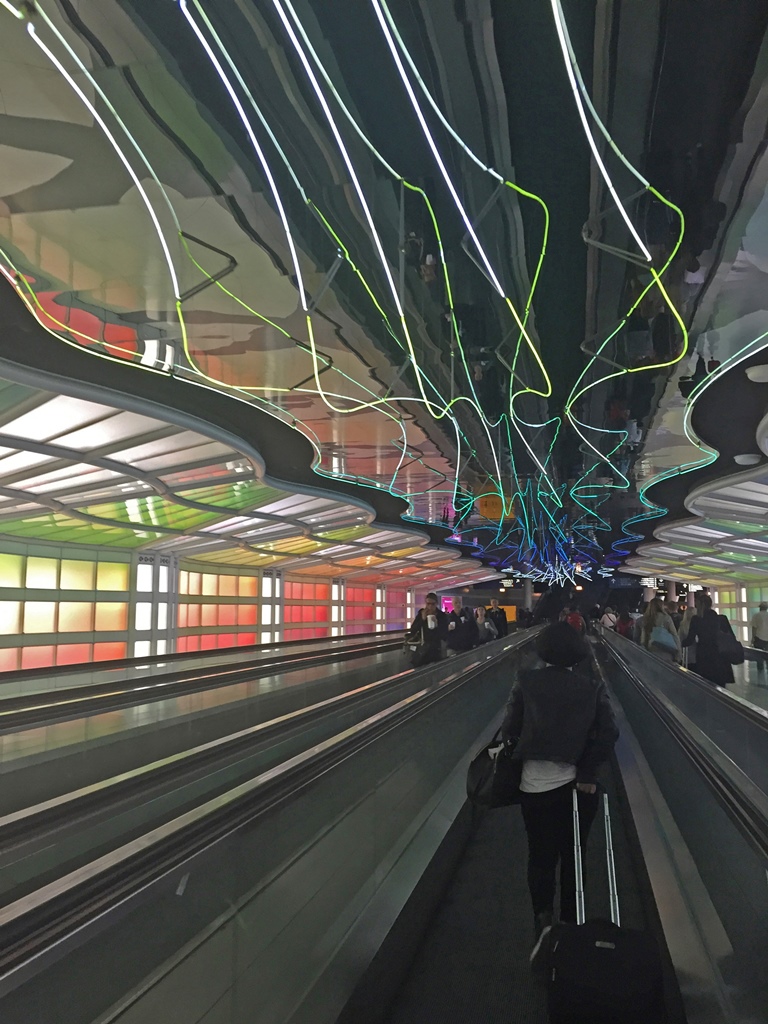
Nella on Walkway at Chicago O'Hare with Pretty Lights

Groundbreaking Technology in Chicago!
But we didn’t have much time to enjoy Chicago, as our layover was a short one, and we
soon found ourselves on a Lufthansa flight which conveyed us to Germany over the next
eight hours. As there isn’t a Weingarten International Airport, we elected to land in
Frankfurt, where the plan was to transfer to a domestic flight which would take us to
Friedrichshafen, a town of 58,000 on the north shore of the Bodensee.
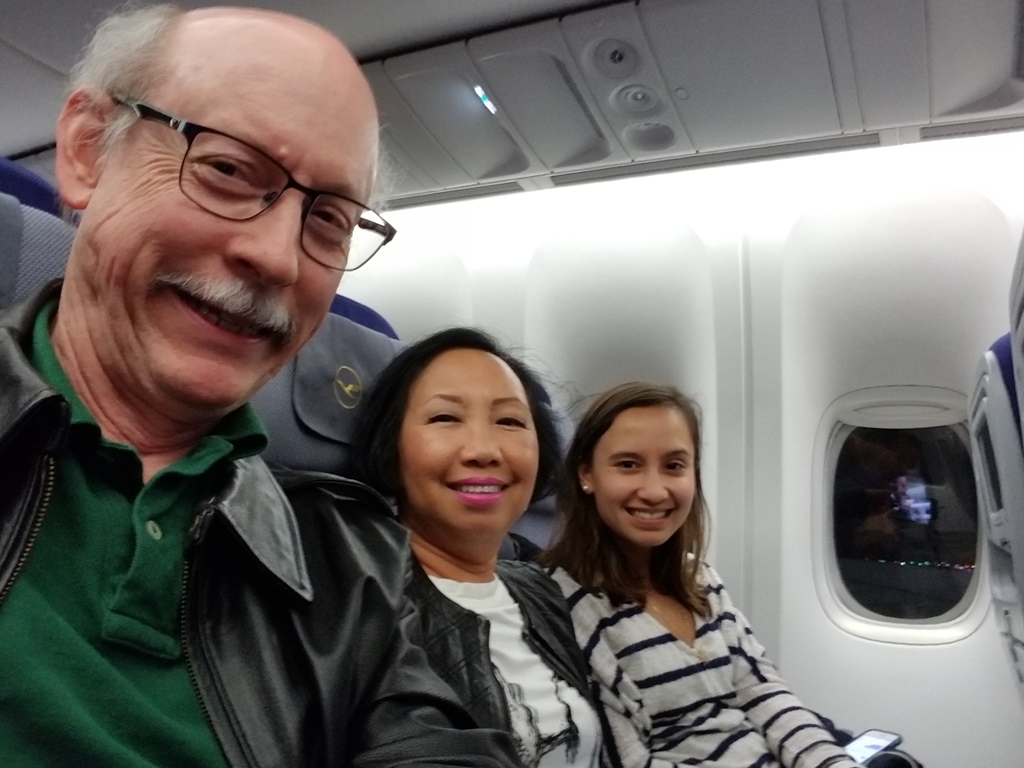
Heading for Frankfurt
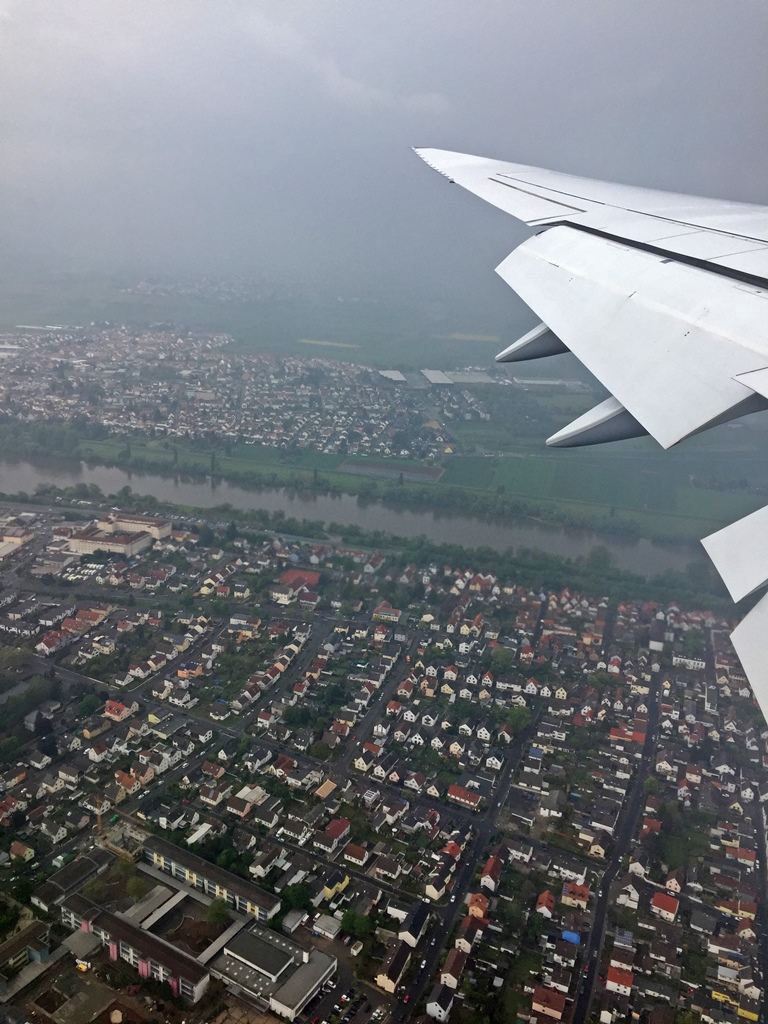
Suburban Frankfurt with Main River
Friedrichshafen is a pleasant town in its own right – being situated on the lakeshore,
it’s quite scenic, and it has an interesting Old Town. And as with everyplace else in
Europe, there is history here. Among other items, Friedrichshafen was the location of
Ferdinand von Zeppelin’s dirigible factory (the Graf Zeppelin and the ill-fated
Hindenburg were built here, among other airships). Blimp rides over the Bodensee
are still available to visitors to Friedrichshafen.
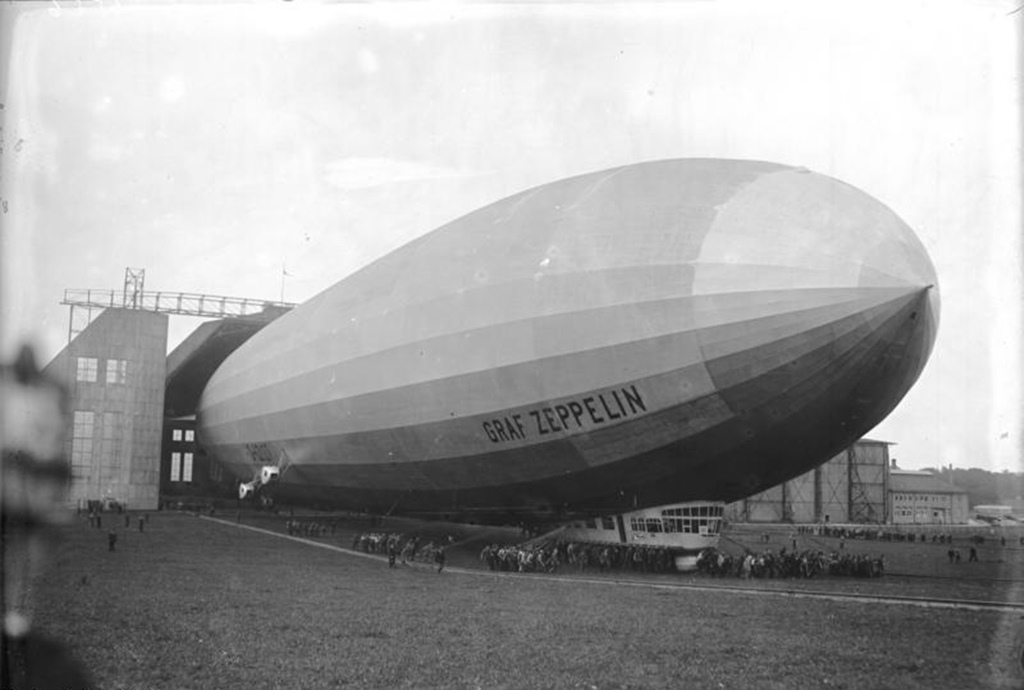
The Graf Zeppelin
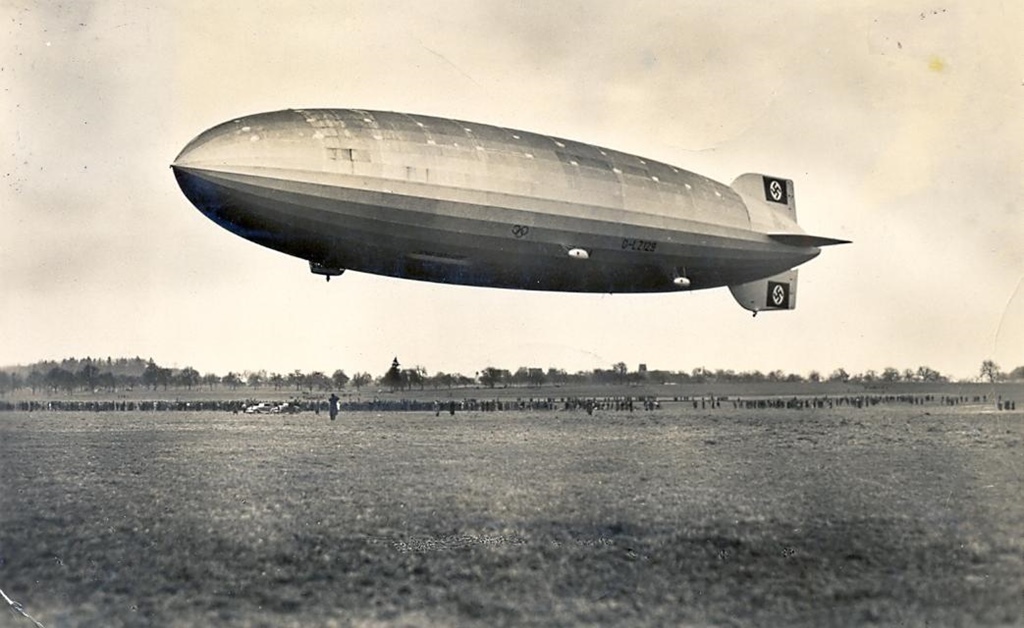
The Hindenburg, First Flight (1936)
Other industrial facilities were also located here, and their presence made the area important
to Germany’s war effort in the 1930’s and 1940’s. This also made Friedrichshafen a prime
target for Allied bombers, which flew several missions that did considerable damage to the
factories and destroyed much of the city (which was rebuilt after the war). All very
interesting, but our interest in the city was in its proximity to Weingarten, from which our
hosts would drive (a distance of about 16 miles) to pick us up.
But as things turned out, we never reached Friedrichshafen, even briefly. As we landed at
Frankfurt, we discovered that rain was falling. We didn’t think much of it and made our way
through immigration, continuing to our boarding gate for the Friedrichshafen flight, out near
the end of a long terminal building. This layover was longer than the one in Chicago, and as
we were early, we found ourselves to be nearly alone in the seating near the gate. We
occupied ourselves with the amusements we’d brought for this purpose, occasionally looking
out at the wet airplanes.
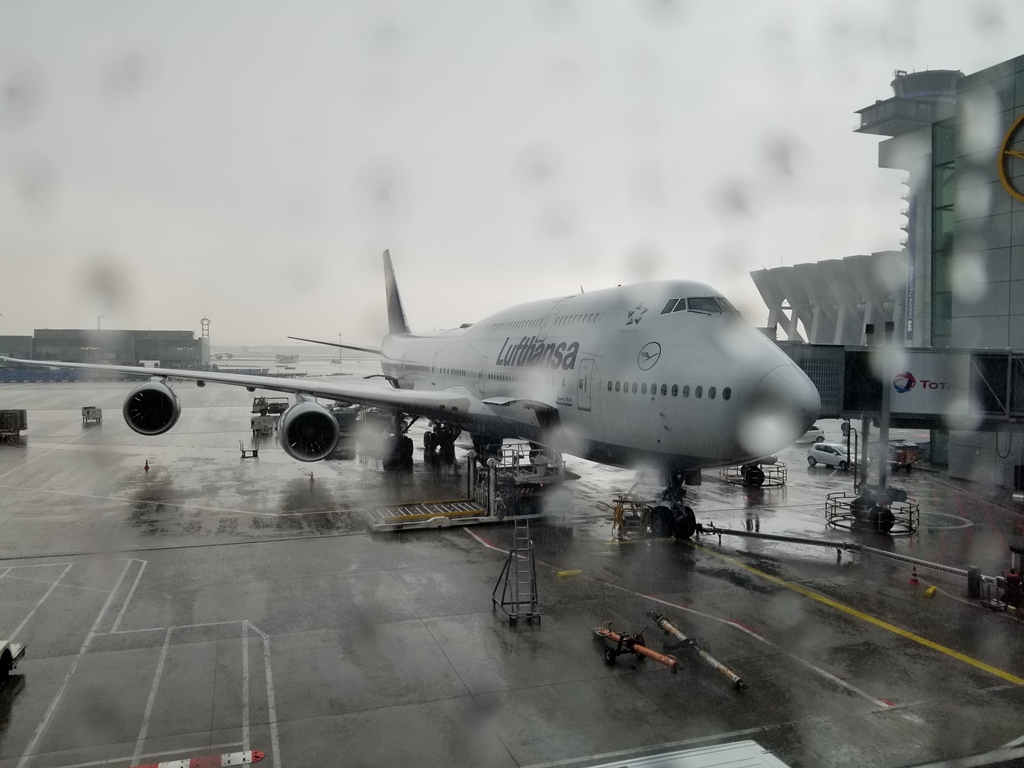
Plane in Rain in Frankfurt am Main

Airport Rain, Waiting at the Gate
Eventually more passengers started showing up and sitting down with their carry-on luggage.
When it became about time for people to start boarding, the agent at the gate picked up a
microphone and made an announcement in scratchy German over the P.A. system. We didn’t
understand a word, but our fellow passengers did. They stood up and lined up at the
counter. We watched as each of them talked to the agent, were given some kind of
paperwork, and then walked off, back where we’d come from. Eventually we decided we’d
better figure out what was going on, so we joined the end of the line. We talked to the
agent, who fortunately knew English, and discovered that our flight had been cancelled
because of thunder and lightning in the area. Like the others, we were given a choice
between waiting for the next flight, which would leave in a few more hours, or taking
the train to our final destination (there was a station at the airport). We decided on
the train option, and they printed out tickets for us, with some vague instructions on
where to find our checked luggage. We somehow found the luggage in the baggage claim
area (it was piled up near one of the carousels), passed through a disinterested customs
area, and followed the signs to the train station, arriving with ten minutes to spare
for the next train.
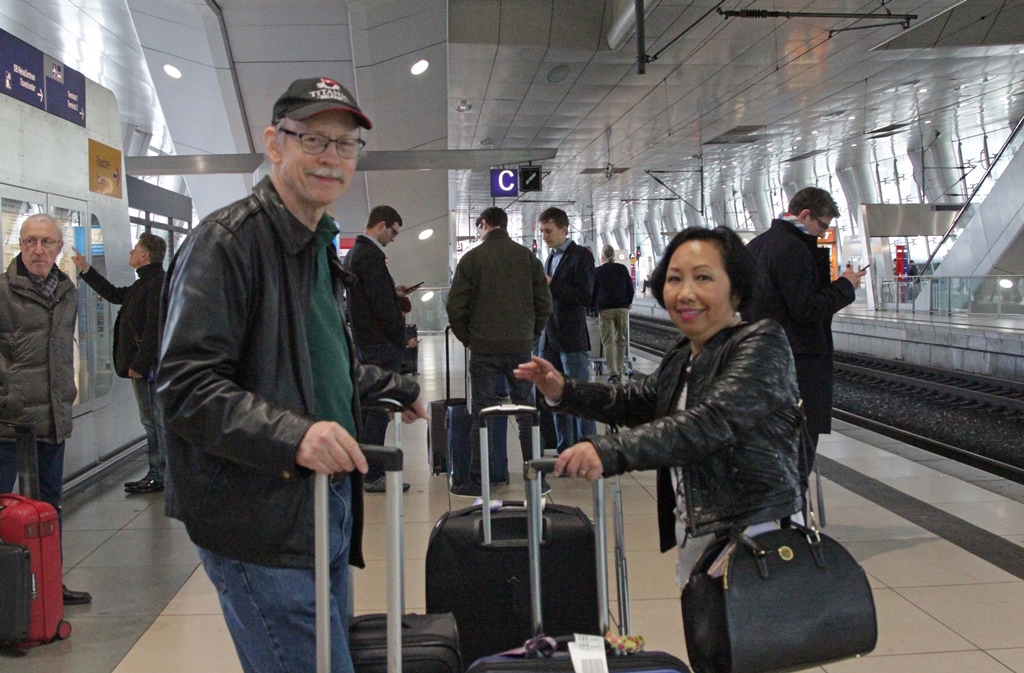
Waiting for Train at Airport
There was one advantage to taking the train. We would start on a line that travelled
generally north to south, passing through Stuttgart and Ulm, and then veered toward the
east, eventually reaching Munich. But at Ulm, we would transfer to a line that continued
southward, toward the Bodensee. It was possible to go all the way to Friedrichshafen on
this train, but there were a number of stops along the way. Unfortunately, there weren’t
any Weingarten stops, but there was a station in Ravensburg, which is just next door.
Connie sent a Messenger text to Rainer, the groom-to-be (his parents were not on Facebook),
to tell his parents, Werner and Nila, about the change in plans. They were probably
somewhat relieved to find that their drive was going to be considerably shorter than
expected. But it would also be considerably later, as our 45-minute plane ride had turned
into a 3-hour train excursion. Fortunately, the trains functioned as advertised, and we
arrived in Ravensburg on schedule. We were very happy to find our hosts waiting for us.
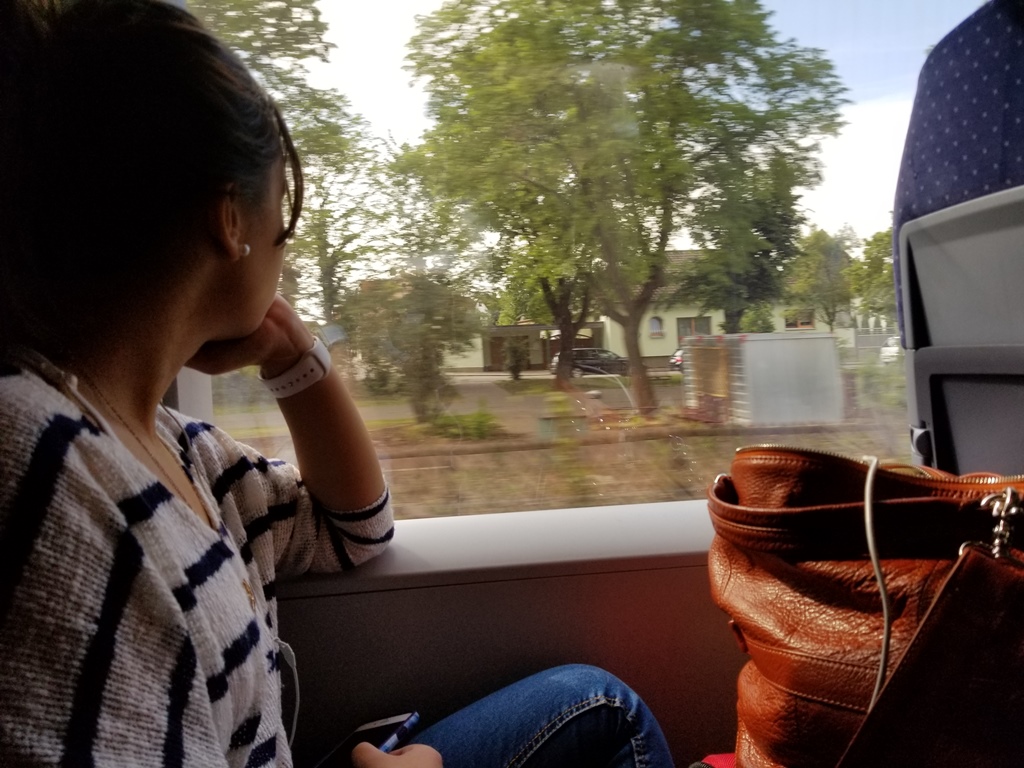
En Route to Ulm
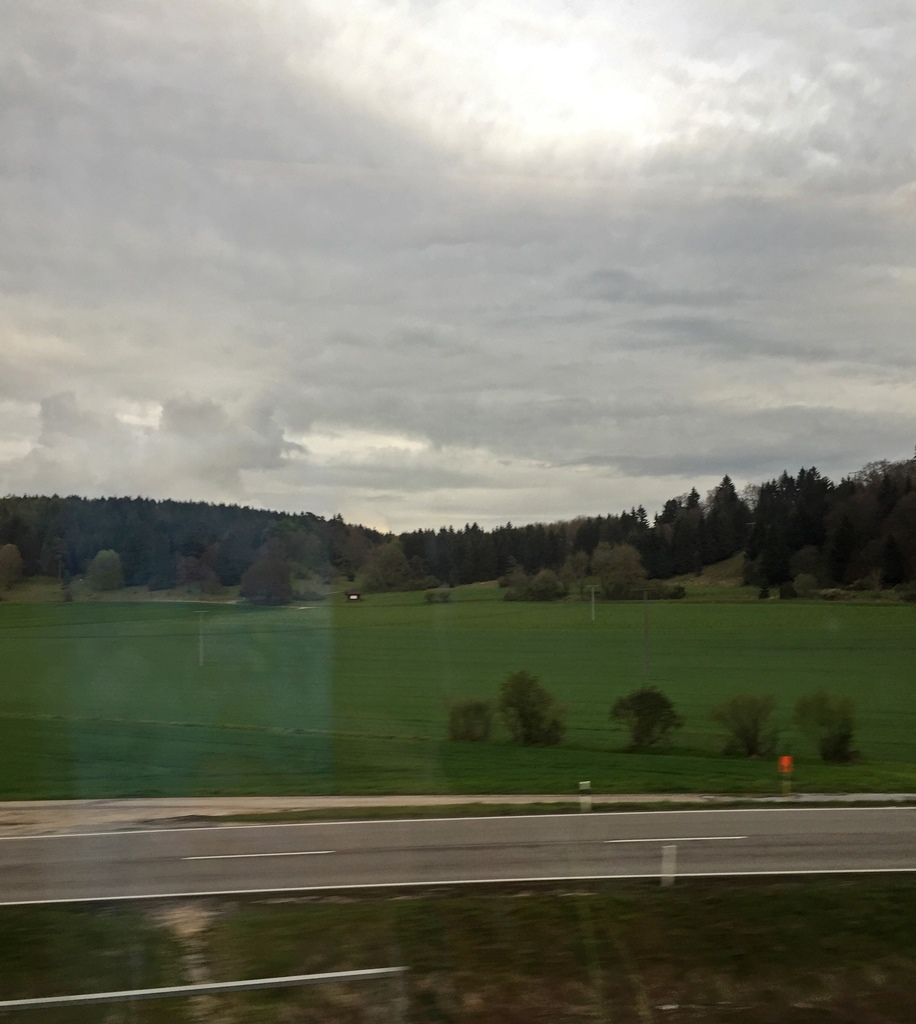
En route to Ravensburg
We were duly collected into two vehicles and transported to Weingarten, where we were fed
and conversed with (mainly in English, with a little bit of Tagalog), until jet lag and our
many exertions made us into very uninteresting conversationalists, at which point we retired
for the night.
After breakfast the next morning, we all piled into a car and headed for the center of town.
Werner and Nila had made plans to show us around the area, and we would be starting with
Weingarten’s Old Town. We parked and started to explore. The Old Town was very nice, with
an assortment of shops and restaurants. On a hill above the Old Town, we could see
Weingarten’s principal tourist attraction, the Basilica of St. Martin. This is the church
of St. Martin’s Abbey (also found on the hill), and with a length of 335 feet, it happens
to be the largest baroque church north of the Alps. I’ll have considerably more on the
Basilica in a future post.
Bob and Werner and Weingarten Town Hall
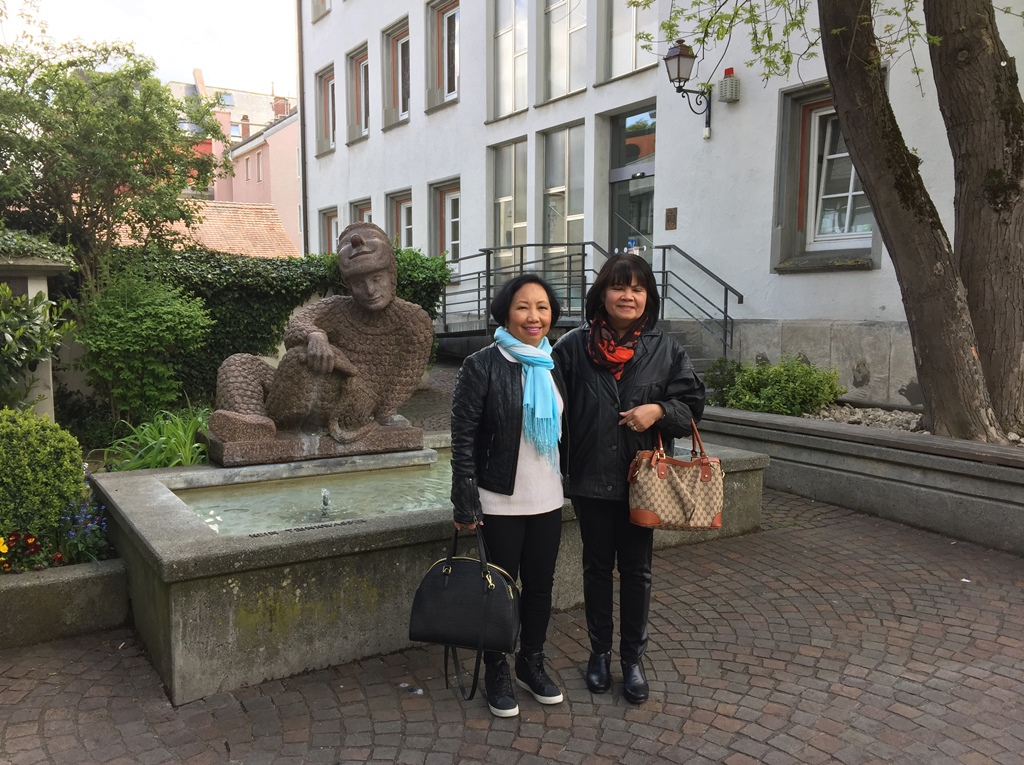
Nella and Nila and Fountain Next to Town Hall
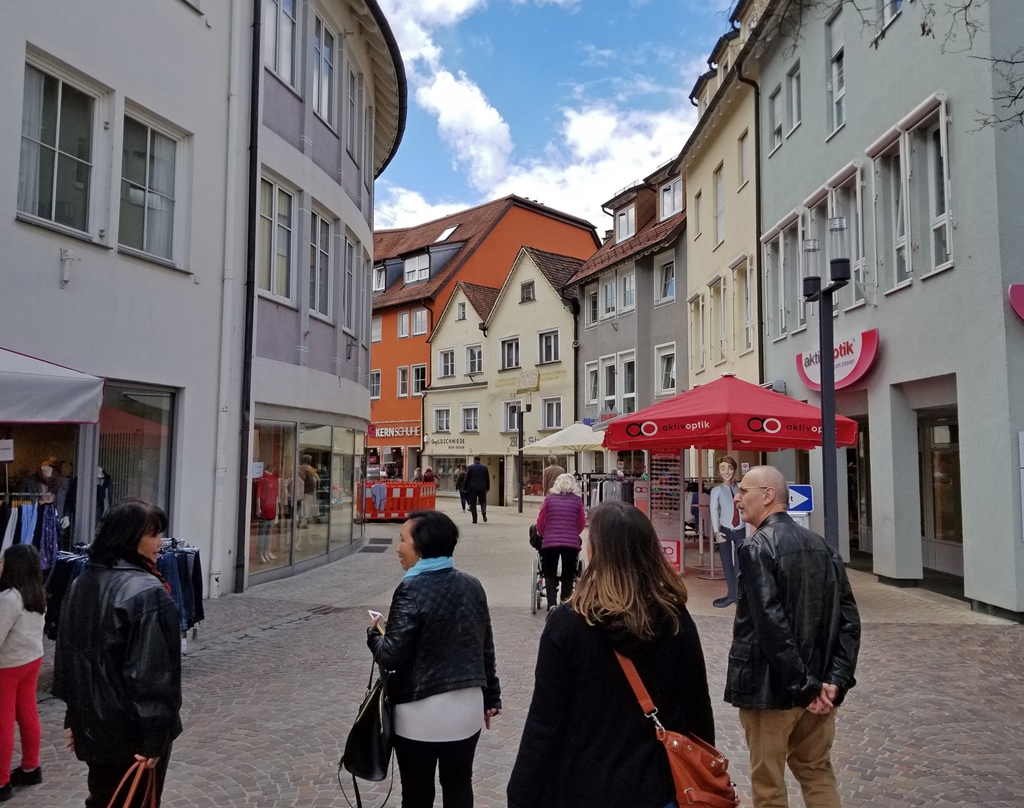
Karlstraße, Old Town
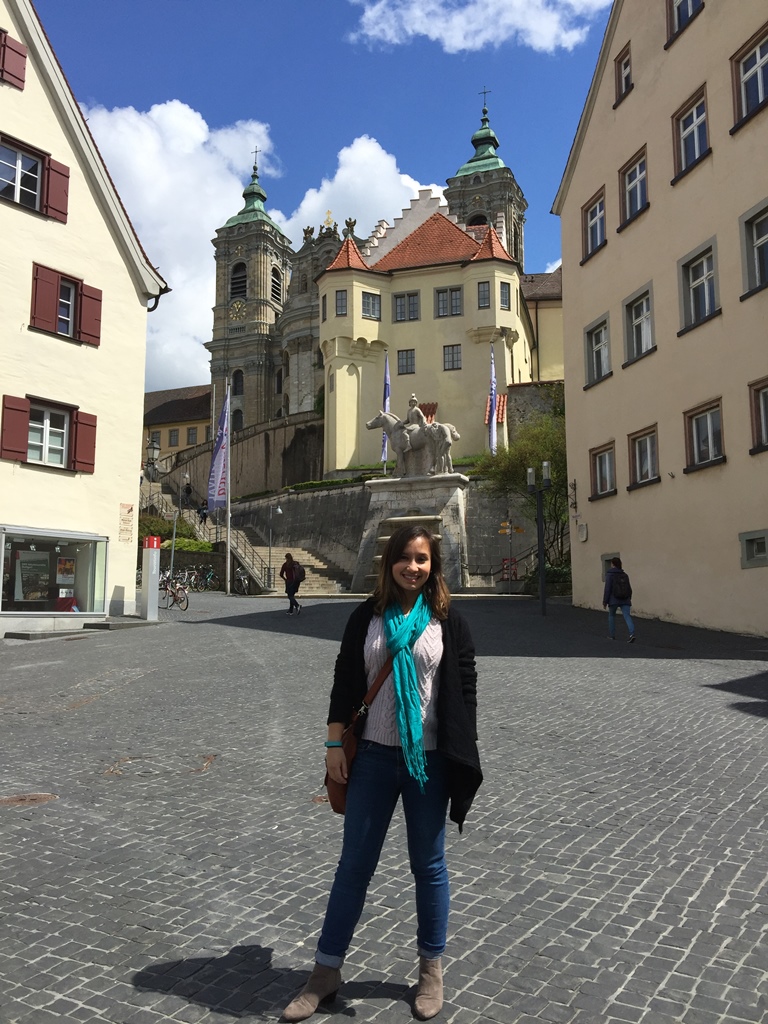
Connie and Basilica
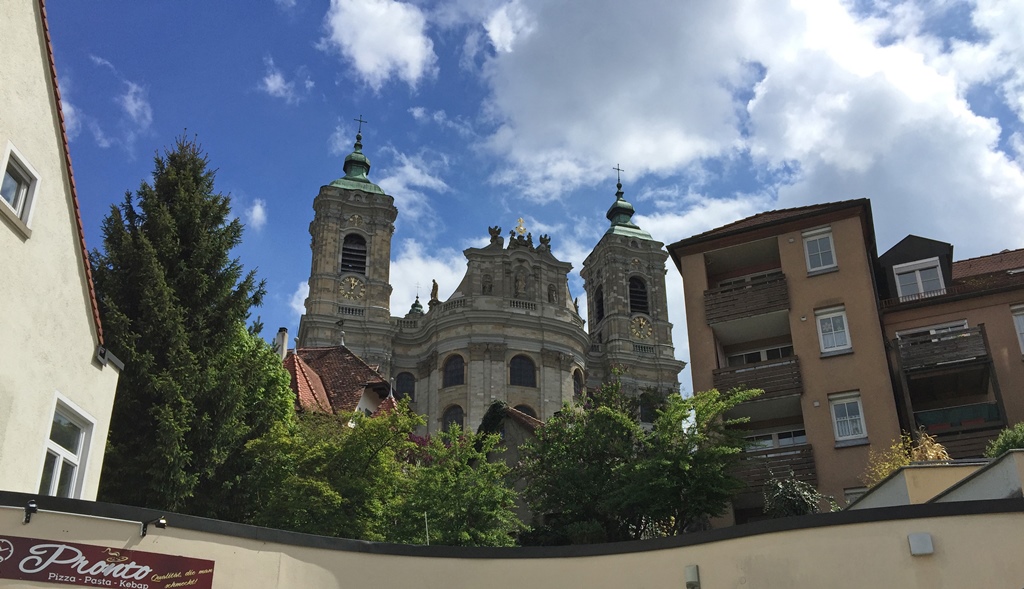
Basilica from Old Town
After finding an ATM (sooner or later, we were going to need some Euros), we found lunch.
Our hosts were very familiar with the local restaurants, and took us to one that served
traditional German food, which was exactly what we were hoping for. The food was both
delicious and attractive.

Egg, Potatoes and "Meat Loaf"
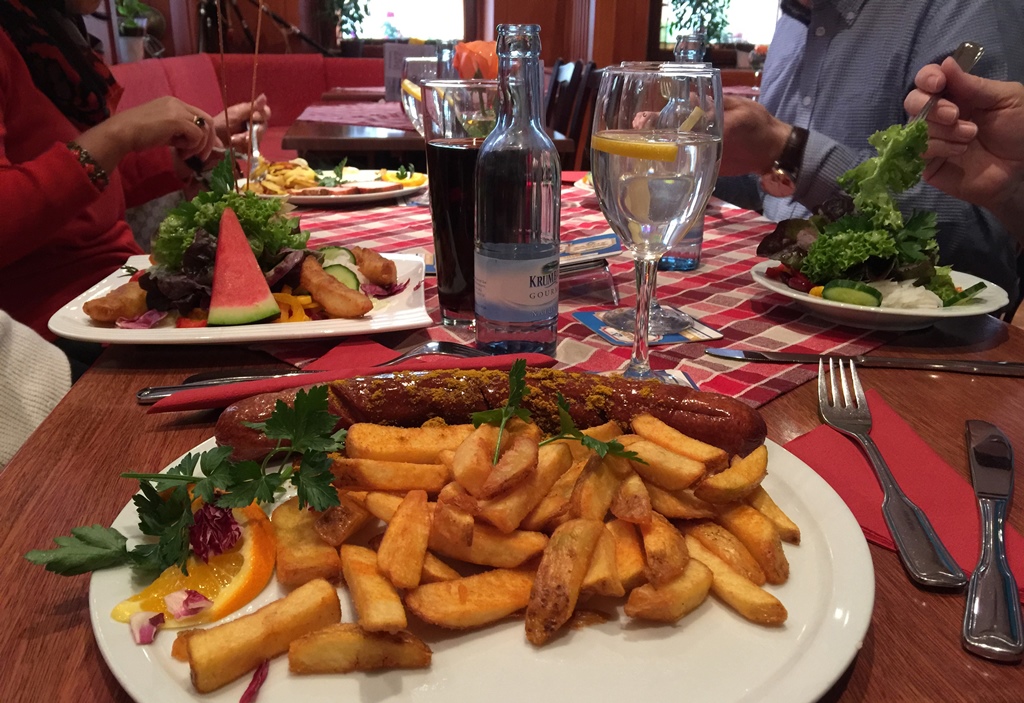
Currywurst and Fries
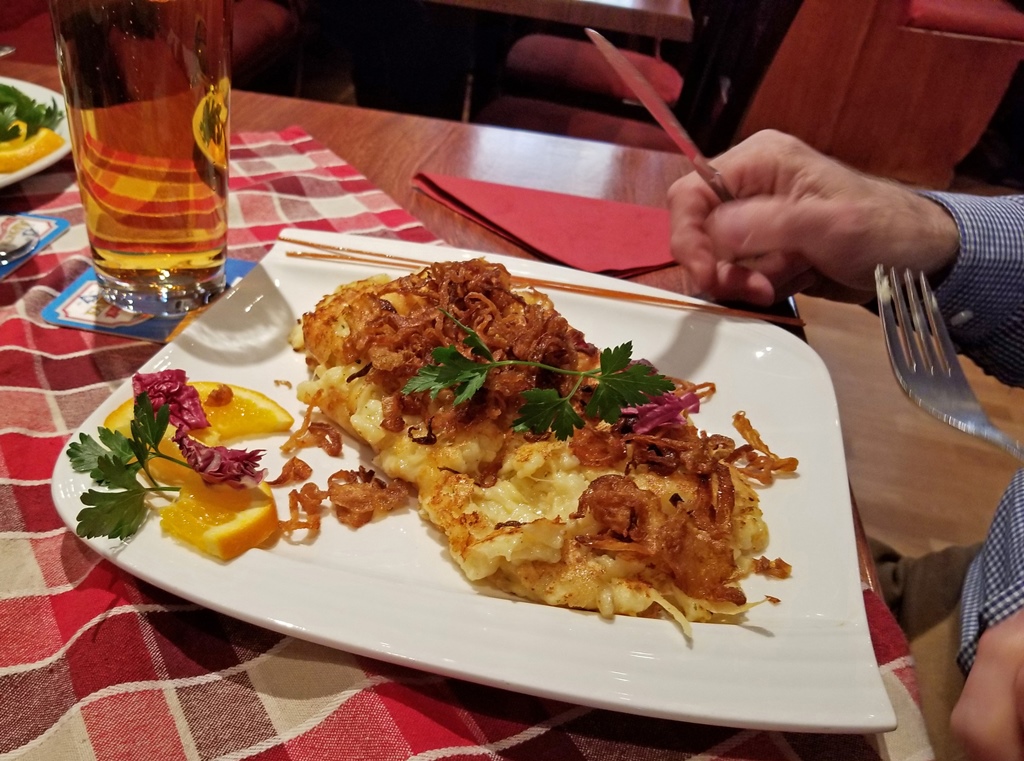
Rösti(?)
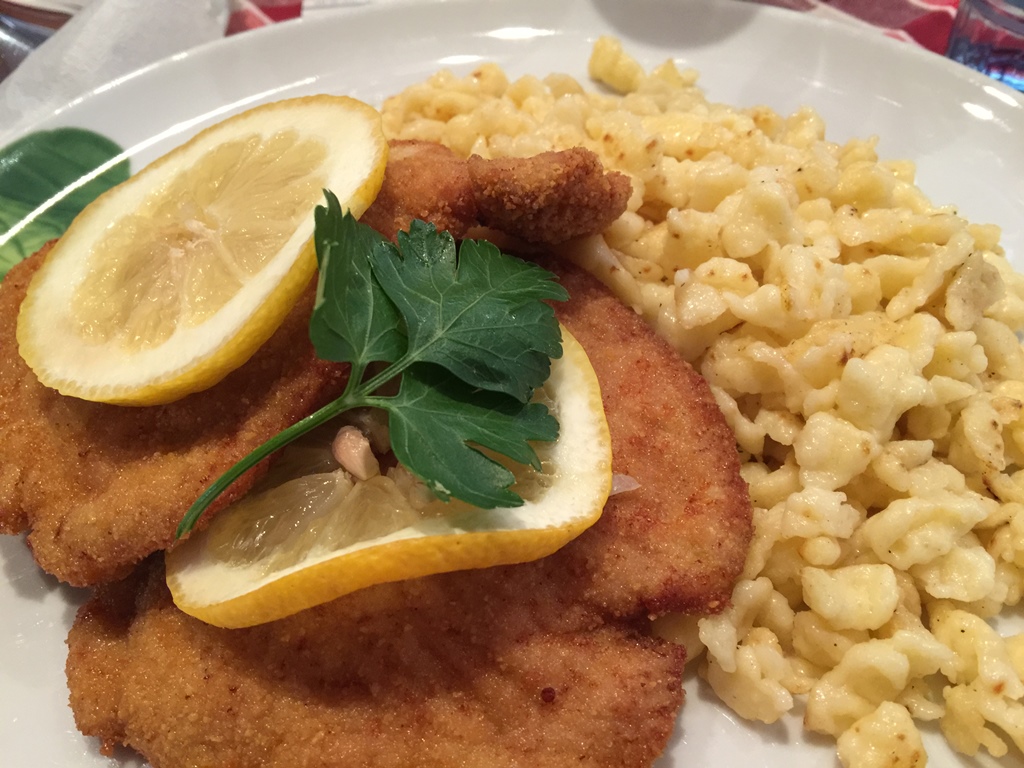
Schnitzel and Spätzle
After lunch, we returned to the car and headed for our next destination. We weren’t
sure what to expect, but whatever it was would be in a town called Altshausen.



















